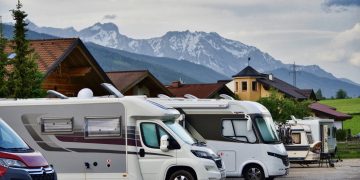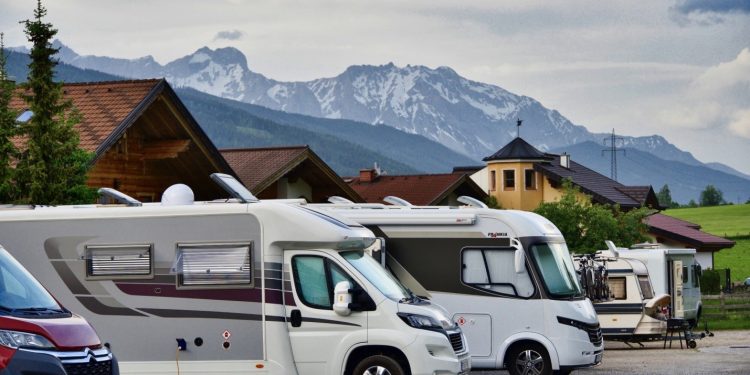Approximately 11% of households in the US own a recreational vehicle or RV in short, with about 1 million Americans living in them.RVs are incredible vehicles to own because they’re super comfy, fun to travel with, and great for camping. If you’re in the market for a new or used RV, you have lots of work ahead of you.
You see, buying an RV is unlike buying a regular car and requires plenty of thought and deliberation. If you don’t know how to buy an RV, worry not; we’re here to help with some valuable tips about buying an RV.
Today’s post is the ultimate checklist for buying an RV to make buying an RV a walk in the park for you.
Determine Why You Want an RV
Before you buy an RV, you need to ask yourself, why do you want an RV and what will you use it for? Some people buy RVs for long-distance and camping trips, while others make RVs their home. You need to establish the purpose for buying an RV so you can find one that aligns with your needs.
RVs are especially great for road trips because you can just sleep in the RV, instead of paying for a hotel. However, some people choose to make RVs their home and this is totally okay. Decide what you want to use your RV for to help you narrow down your options.
Types of RVs for Your Choosing
All RVs are split into two types; motorhomes and towables. As the name implies, motorhomes are homes on wheels. These are RVs with all beds, furniture, and appliances that you can drive from point A to B.
Towables, on the other hand, are RVs that attach to another vehicle. The vehicle tows the trailer to its destination, hence the name towables. Towables are usually cheaper than motorhomes but can be just as expensive, depending on their features.
All towables and motorhomes are further broken down into five types, which are:
Class A Motorhome
If you want a huge RV, then a class A motorhome is just what the doctor ordered. Class A motorhomes are the biggest of the bunch and are great for living in. This is an excellent option for people who plan to live in their RVs, but maybe too expensive for most folks.
Class B Camper Van
This is a small RV great for weekend getaways and excursions. Since they’re small they can only fit small families and couples. They also have wet baths that combine the toilet and sink in the shower stall.
Class C Motorhome
Class C motorhomes are the most common type of RVs, consisting of a cab and trailer that exist separately. You can drive the living quarters anywhere you want, but you have no direct access to the trailer once in the cab. They are much easier to drive but smaller than class A motorhomes.
Truck Camper
A truck camper is an RV where the living quarters rest on the back-end of a pickup truck. It’s one of the smallest types of RVs you can get, but also the most affordable. It’s a great RV for people new to RVing before they move on to larger vehicles
Travel Trailers
Travel trailers or bumper-pulls became popular in the 50s. These RVs have trailers that attach to the bumper part of a vehicle that tows them. They’re a tad smaller but also very affordable.
Make a Budget for Your RV
Once you determine the RV’s purpose, the next step is to find out how much you’re willing to spend on the RV. Remember to keep your budget realistic, especially if you’re strapped for cash. RVs cost between $10,000 to $300,000, depending on the type and the RV features.
While creating your budget, don’t quote a figure that will strain your budget. Remember, you’ll also have to pay for RV maintenance and appliances. Find an RV that’s within your budget but don’t skimp too much on it.
If you visit the dealerships, don’t forget you have a budget to stick to. Seeing other RVs with all their features may tempt you into paying more for your RV. Stick to your budget to avoid future financial repercussions.
While creating a budget for your RV, it’s also important to remember the RV expenses. Some of these expenses include:
- Repair and maintenance expenses
- Vehicle registration
- Insurance and GAP coverage
- Parking costs
- Cost for cooking and dining equipment
- Propane and fuel costs
- Cable and internet access, if necessary
These are some additional costs you need to keep in mind when budgeting for your RV. You can focus on the actual cost of the RV first, then make arrangements for the extra costs later on.
Learn All You Can About RVs
Before heading to the RV dealer, it’s super important to learn one or two things about RVs. Having the basics down pat will put you in a better position to find your dream RV.
For instance, you can start by learning the types of RVs and how much each costs. Also, learn about maintenance costs and what kind of tools you’ll need to fix up your RV. Try to learn a bit about measurements and the types of tanks available for RVs.
Learning a few things about RVs will go a long way in helping you find the best RV for your needs. The internet is an incredible resource for learning all you need about recreational vehicles.
Decide Whether You Want to Buy a New or Used RV
Once you know a thing or two RVs, you now have to decide whether you want to purchase a new RV or a used one. Each type of RVs has its pros and cons, and the type you settle for depends on your specific needs and your pockets.
New RVs are more expensive, but you don’t have to worry about wear and tear. This means your RV can last for ages if you take good care of it. Plus, when you buy a new RV, you can liaise with the manufacturer on how you want to customize it.
Buying a used RV is also a great idea, especially if you don’t have too much to spend. Used RVs work just as well as new RVs save from a few minor problems. If you’re buying a used RV, make sure you source it from a reputable used RV dealer like https://www.nelsonrv.com/used-rv-listings-tucson/ to get bang for the buck.
Inspect the RV’s Condition(For Used RVs)
Used RVs tend to be a tad trickier to buy than new RVs because you never know how the previous owner handled the RV. That said, here’s a tiny RV buying checklist for used RVs. Before you buy a used RV, ensure your check the:
Frame: Examine the vehicle frame for signs of rust and damage. Steer clear from any RVs with excessive signs of rust, wear, and tear.
Axles: Whenever you unload the RV, you should see the axles curve upwards. If the axles remain straight after unloading, it means that the previous owners might have overloaded them in the past. Avoid RVs that show signs of the previous overloading.
Electrical components: Check all electrical components in the RV to ensure they are fully functional. If they don’t work, you’ll have to pay extra for electrical repair later on.
Roof: Climb on top of the RV’s roof and check for any cracks, dents, or widespread rusting.
Appliances: Appliances are an integral part of all RVs. Check what kind of appliances the RV has and if all of them work. You can overlook a few non-functional appliances, but all of them not working is a definite no-no.
That said, also remember to inspect the entire RV for water damage. Check for any mushiness on the RV walls and whether wooden components are cupped or swollen.
Remember the 10-Year Rule
While looking for an RV, don’t forget about the 10-year rule. Most RV parking lots and campsites have a 10-year rule. This means they don’t prioritize reservations for RVs that are more than 10 years old.
As such, you might want to do your digging for an RV that isn’t too old. However, the 10-year rule doesn’t mean that your RV is banned from parking or setting camp in these areas. It just means that doing so will be a lot more difficult for RVs that are more than 10 years old.
If your RV is 10 years or older, you’ll have to fill out tons of paperwork before you get a parking spot. You might also have to send photos of the RV to the parking lot management. If your RV isn’t too badly off, you can get a parking spot.
How to Buy an RV Made Easier
Now that you know how to buy an RV, buying one for yourself should be a breeze. Remember to explore all your options before settling on an RV.
For more informative content, check out the other posts on the site.













